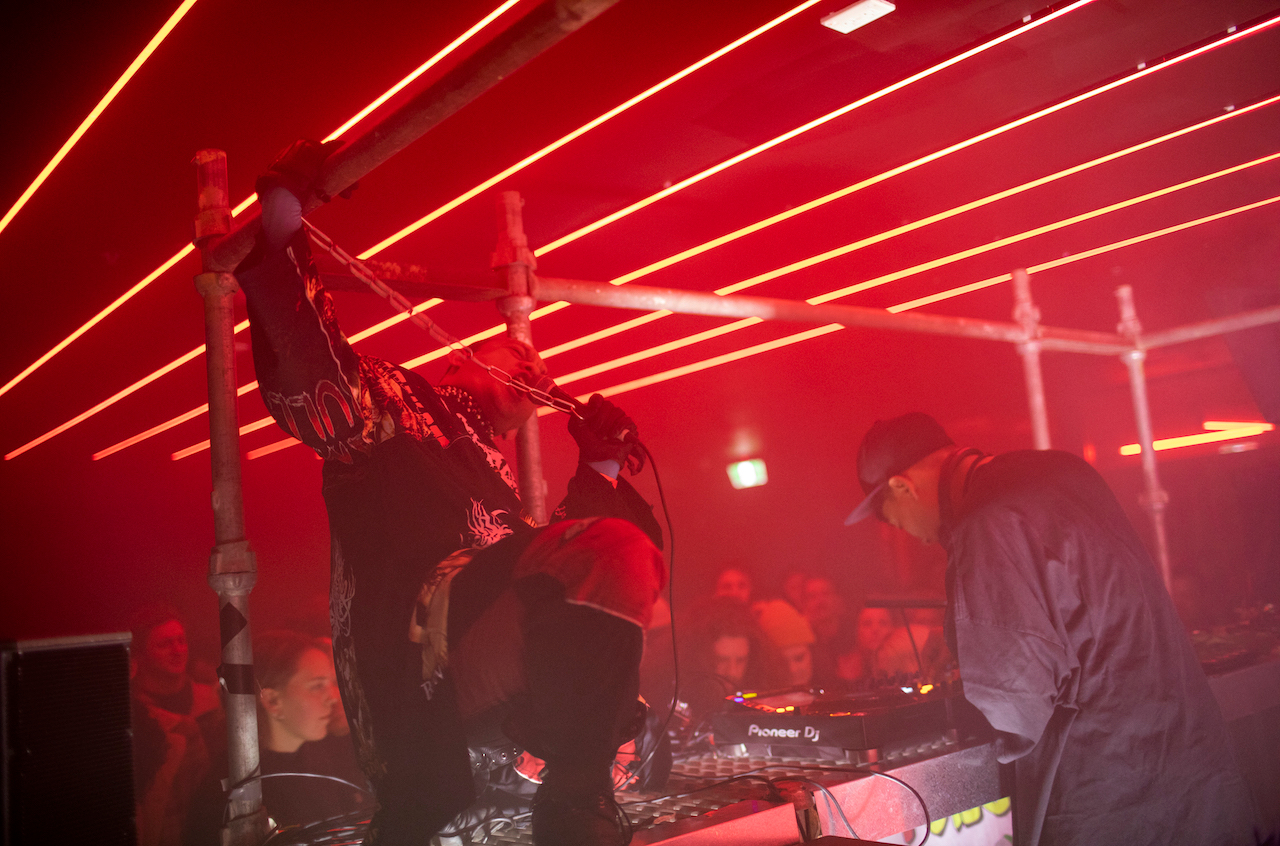- Find out why this experimental arts and music festival in Tasmania is one of the most unique events in the world.
- Flying into Hobart, my plane experienced prolonged, teeth-rattling turbulence. Hands grabbed knees, voices muttered nervously and terror pervaded, as the flight descended through Roaring Forties crosswinds. Hearts were in mouths, if only for a moment. It was a pretty appropriate aperitif for the severe delights of Dark Mofo.
Since 2013, Dark Mofo, the cultural offering from the idiosyncratic Museum Of New And Old Art (MONA), has been challenging residents and visitors with one of the most unique winter festivals in Australia—if not the world. A cornucopia of big-ticket music shows and experiential art installations, the sprawling, 18-day event has cemented Tasmania, the estranged island state falling off the edge of the map, as a winter destination. This year was no different, as Hobart's sleepy harbour became MONA's demented demesne. Banners lined the streets and totemic red crosses burned into reflections on the water. From shop window displays to corporate logos on office buildings, the city was consumed with neon red light, woodsmoke and fire. "It's a bit like an alternative Christmas," my cousin remarked, but less Santa more Satan, such is the festival's delight in pushing pagan-like motifs and courting controversy. Gothic typescript abounded, nodding to the gothic sensibilities of the state, or just to hipster affectations, depending on how you look at it. There was, naturally, a flood of interstate visitors, amassing red and black content for Instagram.
This year's musical programme broached a broad range of genres and sounds, but always with a firm eye for the experimental. The waterfront warehouse venue MAC2 hosted a masterful performance from FKA twigs, who appeared from a red curtain tap-dancing in ruffles and black shades, like a vaudeville Agent Smith. Over music coalescing classical touches with DIY punk electronica, her voice oscillated between constrained ASMR and fluttering soprano. Sometimes the subtleties were lost, but when underpinned by exemplary choreography and dancers, it was a rollercoaster ride through music-as-movement. Contortionist swagger during tracks like "Figure 8" fell into shivering full-body gurns. This chameleonic performance totally owned the stage, demanding your attention. A lithe pole-dancing routine during "Lights On" unsurprisingly sent the crowd ecstatic. By the time she closed with recent ballad "Cellophane," she had rightfully won everyone's adulation.
The following night, Nicolas Jaar performed live as Against All Logic in the same space. Those familiar with the material will know what it's about: soulful vocal hooks, piano stabs, colour-by-numbers crowd-pleasers in his inimitable style. The show had the makings of a proper party, but with the stage set in-the-round, and Jaar's back to the audience as you entered, it might have been better-suited to a conventional club space. He was intermittently accompanied by a choir, which was a nice concept on paper, but one that felt mostly flat because the singers weren't appropriately amplified.
Far more compelling was Jaar's performance at Federation Music Hall, Tasmania's premiere classical venue. Here his absence was conspicuous, as four musicians played wind and string instruments while Jaar manipulated and processed the sound back-of-house. Soundscapes unfolded as stage lights threw the musicians' shadows onto the walls, calcifying into focus. A baby grand piano twinkled away of its own accord, interspersed with ominous crumbling, creaking and overwhelming bass frequencies. It made the auditorium feel claustrophobic. I feared that Jaar might break it, cause it to implode inward, and once again I was experiencing exhilarating uncertainty akin to the plane's turbulence. It brought me back to the first time I heard Jaar's "Dubliners" more than a decade ago, a reminder of what made him so interesting as an artist to begin with.
Dark Mofo's programming excelled at challenging musicians to present their work in innovative ways or contexts. A few days later, Hobart Town Hall hosted a screening of the German '20s silent horror film The Golem: How He Came Into The World, accompanied by a live soundtrack from Lucrecia Dalt. The screening, a partnership with Goethe Institut Australien, showcased Dalt's sensibility towards geological formation and folkloric creation myths, which made her an ideal collaborator for adding tension, pliability and pathos to this particular film.
Dalt performed again as part of a musical partnership with Berlin Atonal, which featured two nights of experimental, all-round cacophonous noise in MAC2. The venue underwent an overhaul, with lighting trusses falling to the ground and strobe lighting blistering through the darkness. Highlights came from Aïsha Devi, whose stop-start, rave-crazed warblings sounded like she was teasing tropes from some '90s acid pandora's box before slamming it shut, and Vatican Shadow, who closed with works from his 2016 record Media In The Service Of Terror. His deranged silhouette and fevered stage antics were domineered by sepia-drowned fly-by footage from some desert war zone, like an ominous abstraction of the record.
Dark Mofo's musical focal point, though, was the late-night dance precinct Night Mass. While the above shows were standalone, ticketed performances, Night Mass resembled a club night, consolidating new and old venues together in the heart of Hobart across a cluster of buildings and side streets. Red Bull and VIA presented some of the most potent voices from Brazil at the Cathedral stage, a sunken pit of an arena, again in-the-round. Teto Preto's provocative performance drew the crowd for its infectious fusion of percussive electronica, charged lyrics and stage theatrics, bringing some much-needed heat to proceedings, even if the stage's sound was too lacking to transplant a belting São Paulo party to Hobart. In contrast, the mainstay venue Odeon Theatre delivered warming and raucous performance from the powerful US pop acts Junglepussy and Empress Of, before the Australian DJ Emma Stevenson maintained the energy with an expertly crafted closing set. Across the neighbourhood, the old Tatts Hotel had been transformed into a permanent three-floored venue, where the Indonesian duo Gabber Modus Operandi played a standout set of proto-grime bangers and crazed energetic rave in the Soft Centre room, before a similarly charged performance from China's Hyph11E.
One thing was sure about Night Mass this year: it was international, gender-inclusive and all the better for aggressively pushing boundaries into unknown spheres. This is a fair summation of Dark Mofo's musical offering overall. Determined to allow artists to experiment, it's the perfect antidote for those who might feel disaffected with cookie-cutter lineups. Even calling it a "festival" feels reductionist, such is the array of events, from exhibitions and feastings to burnings and nude swims.
Some of this may come across as pretentious posturing, especially in a state where unemployment and housing remain pertinent, starkly visible problems. "It's just more Melbourne art wank really isn't it?" a Tasmanian conferred to us at the local pizzeria after Night Mass. During the festival, the local newspaper The Mercury ran a lighthearted fashion piece entitled "Spot The Mainlander" (hint: impractical or awkward winter wear, head-to-toe Melbourne black). Dark Mofo was certainly a far cry from the realities of the rusting remnants of industry in the state's North West, where I used to live. It's also not the sort of festival you can visit on a whim, with many shows proving expensive and quick to sell out.
But for the most part, Hobart seems to be onboard, as it should be. Rarely do you go to a festival where, aside from just seeing a few shows and adding to the local economy by being there, you're also challenged to learn more about the broader setting. I felt encouraged to go and explore beyond the confines of the festival; the interdisciplinary, all-encompassing curation almost demanded it. The DarkLab team know that venturing a short distance outside of Hobart will invariably confront you with some of the most breathtaking, challenging and viscerally thrilling sights, sounds and histories in Australia. Dark Mofo just offers a path and a map for how to get there.
Photo credits /
Dark Mofo/Jesse Hunniford - Lead, Red Cross, Against All Logic, FKA twigs, Lucrecia Dalt
Dark Mofo/Rémi Chauvin - Dark Path Tesla Coil, Teto Preto, Gabber Modus Operandi
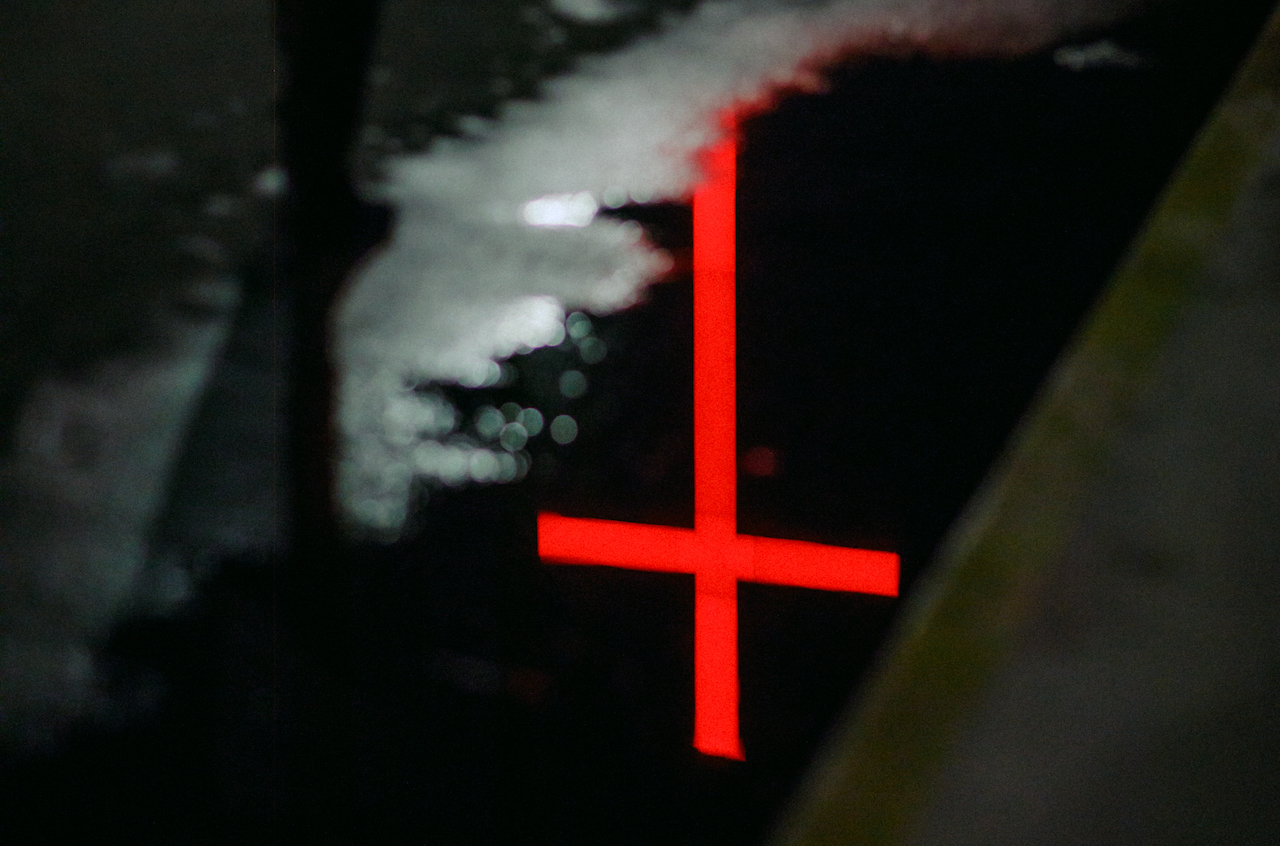 This year's musical programme broached a broad range of genres and sounds, but always with a firm eye for the experimental. The waterfront warehouse venue MAC2 hosted a masterful performance from FKA twigs, who appeared from a red curtain tap-dancing in ruffles and black shades, like a vaudeville Agent Smith. Over music coalescing classical touches with DIY punk electronica, her voice oscillated between constrained ASMR and fluttering soprano. Sometimes the subtleties were lost, but when underpinned by exemplary choreography and dancers, it was a rollercoaster ride through music-as-movement. Contortionist swagger during tracks like "Figure 8" fell into shivering full-body gurns. This chameleonic performance totally owned the stage, demanding your attention. A lithe pole-dancing routine during "Lights On" unsurprisingly sent the crowd ecstatic. By the time she closed with recent ballad "Cellophane," she had rightfully won everyone's adulation. The following night, Nicolas Jaar performed live as Against All Logic in the same space. Those familiar with the material will know what it's about: soulful vocal hooks, piano stabs, colour-by-numbers crowd-pleasers in his inimitable style. The show had the makings of a proper party, but with the stage set in-the-round, and Jaar's back to the audience as you entered, it might have been better-suited to a conventional club space. He was intermittently accompanied by a choir, which was a nice concept on paper, but one that felt mostly flat because the singers weren't appropriately amplified.
This year's musical programme broached a broad range of genres and sounds, but always with a firm eye for the experimental. The waterfront warehouse venue MAC2 hosted a masterful performance from FKA twigs, who appeared from a red curtain tap-dancing in ruffles and black shades, like a vaudeville Agent Smith. Over music coalescing classical touches with DIY punk electronica, her voice oscillated between constrained ASMR and fluttering soprano. Sometimes the subtleties were lost, but when underpinned by exemplary choreography and dancers, it was a rollercoaster ride through music-as-movement. Contortionist swagger during tracks like "Figure 8" fell into shivering full-body gurns. This chameleonic performance totally owned the stage, demanding your attention. A lithe pole-dancing routine during "Lights On" unsurprisingly sent the crowd ecstatic. By the time she closed with recent ballad "Cellophane," she had rightfully won everyone's adulation. The following night, Nicolas Jaar performed live as Against All Logic in the same space. Those familiar with the material will know what it's about: soulful vocal hooks, piano stabs, colour-by-numbers crowd-pleasers in his inimitable style. The show had the makings of a proper party, but with the stage set in-the-round, and Jaar's back to the audience as you entered, it might have been better-suited to a conventional club space. He was intermittently accompanied by a choir, which was a nice concept on paper, but one that felt mostly flat because the singers weren't appropriately amplified.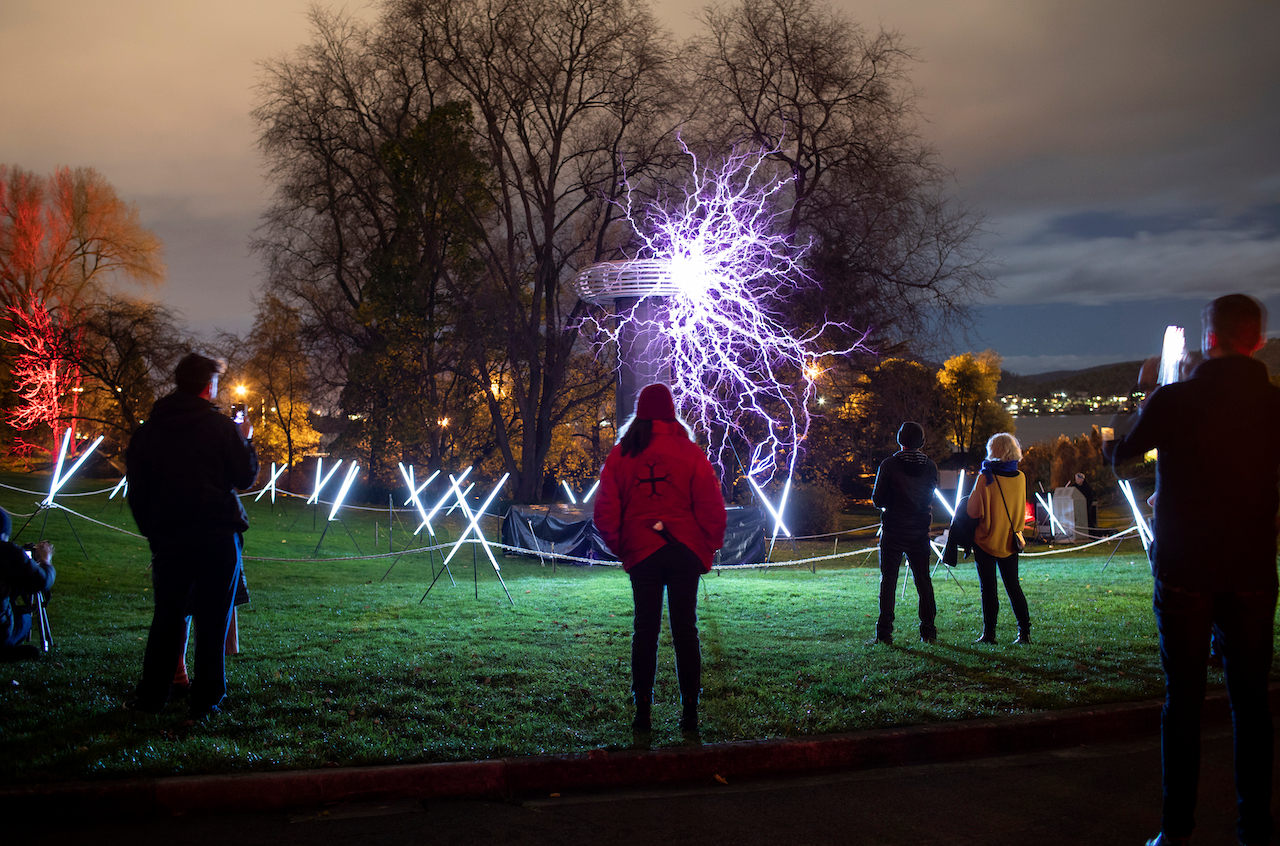
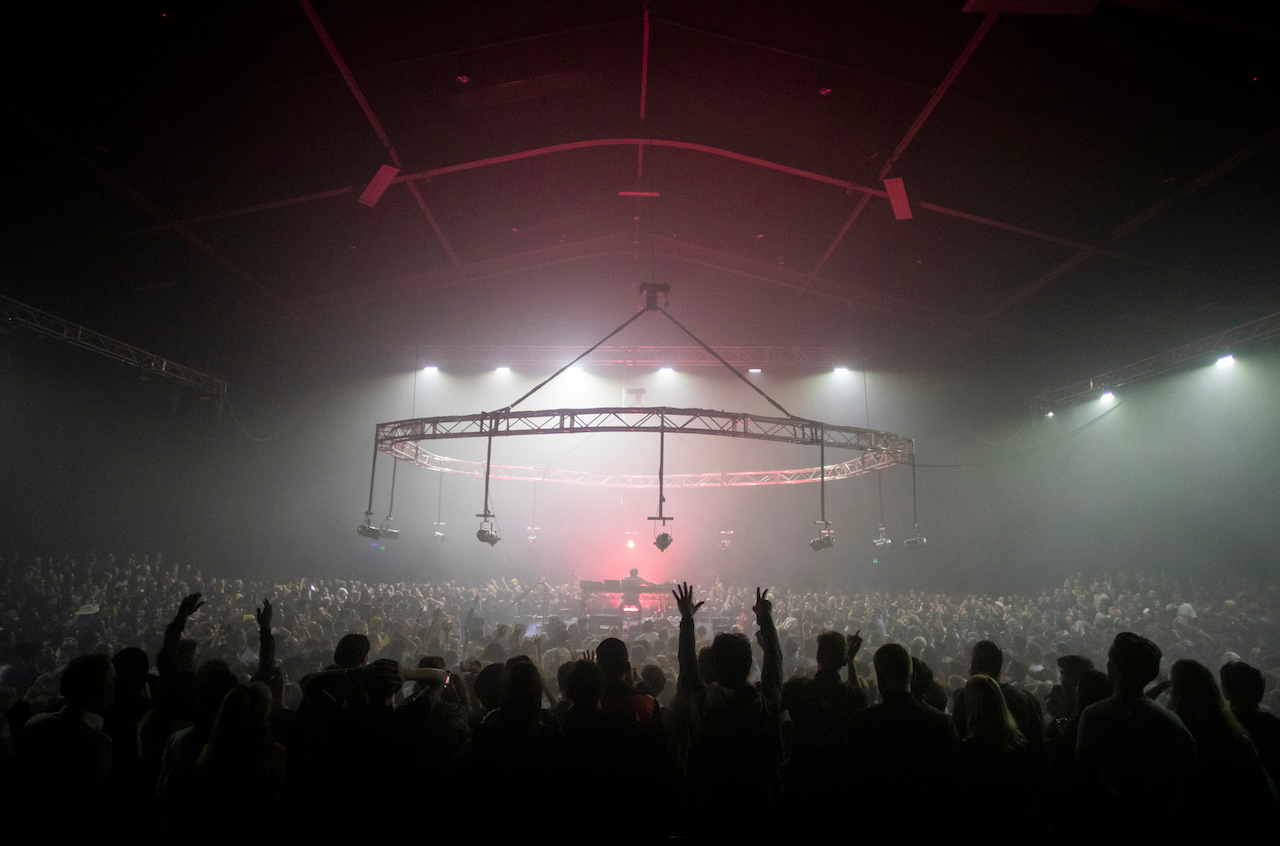 Far more compelling was Jaar's performance at Federation Music Hall, Tasmania's premiere classical venue. Here his absence was conspicuous, as four musicians played wind and string instruments while Jaar manipulated and processed the sound back-of-house. Soundscapes unfolded as stage lights threw the musicians' shadows onto the walls, calcifying into focus. A baby grand piano twinkled away of its own accord, interspersed with ominous crumbling, creaking and overwhelming bass frequencies. It made the auditorium feel claustrophobic. I feared that Jaar might break it, cause it to implode inward, and once again I was experiencing exhilarating uncertainty akin to the plane's turbulence. It brought me back to the first time I heard Jaar's "Dubliners" more than a decade ago, a reminder of what made him so interesting as an artist to begin with. Dark Mofo's programming excelled at challenging musicians to present their work in innovative ways or contexts. A few days later, Hobart Town Hall hosted a screening of the German '20s silent horror film The Golem: How He Came Into The World, accompanied by a live soundtrack from Lucrecia Dalt. The screening, a partnership with Goethe Institut Australien, showcased Dalt's sensibility towards geological formation and folkloric creation myths, which made her an ideal collaborator for adding tension, pliability and pathos to this particular film.
Far more compelling was Jaar's performance at Federation Music Hall, Tasmania's premiere classical venue. Here his absence was conspicuous, as four musicians played wind and string instruments while Jaar manipulated and processed the sound back-of-house. Soundscapes unfolded as stage lights threw the musicians' shadows onto the walls, calcifying into focus. A baby grand piano twinkled away of its own accord, interspersed with ominous crumbling, creaking and overwhelming bass frequencies. It made the auditorium feel claustrophobic. I feared that Jaar might break it, cause it to implode inward, and once again I was experiencing exhilarating uncertainty akin to the plane's turbulence. It brought me back to the first time I heard Jaar's "Dubliners" more than a decade ago, a reminder of what made him so interesting as an artist to begin with. Dark Mofo's programming excelled at challenging musicians to present their work in innovative ways or contexts. A few days later, Hobart Town Hall hosted a screening of the German '20s silent horror film The Golem: How He Came Into The World, accompanied by a live soundtrack from Lucrecia Dalt. The screening, a partnership with Goethe Institut Australien, showcased Dalt's sensibility towards geological formation and folkloric creation myths, which made her an ideal collaborator for adding tension, pliability and pathos to this particular film.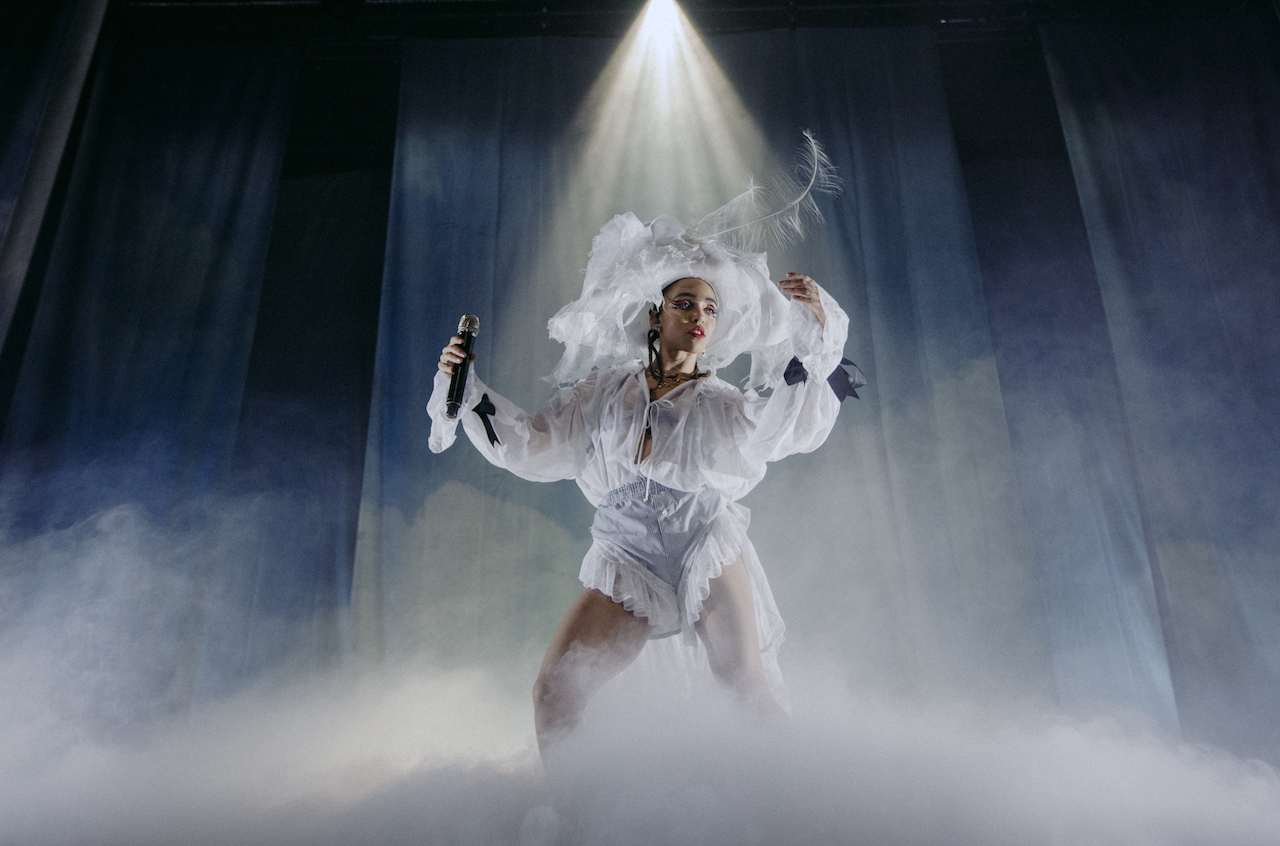
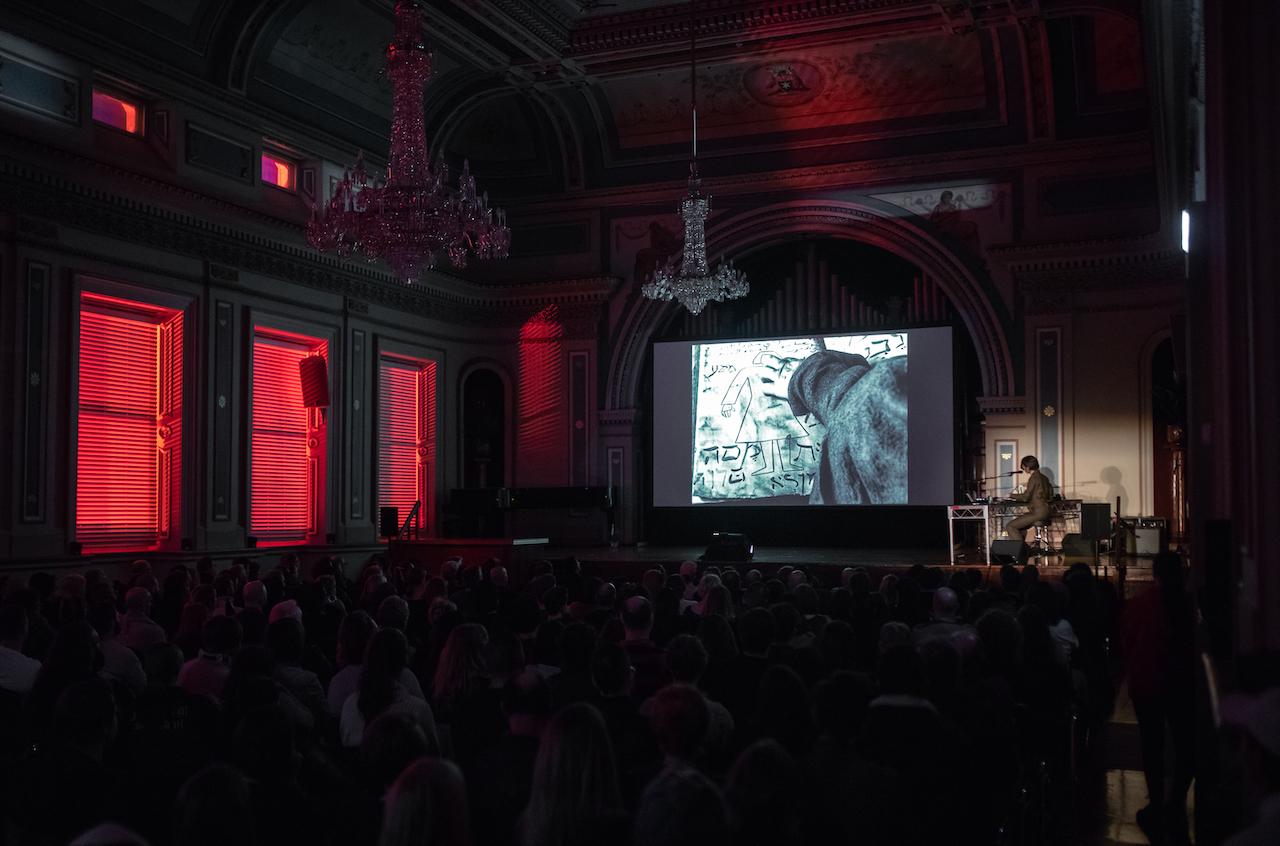 Dalt performed again as part of a musical partnership with Berlin Atonal, which featured two nights of experimental, all-round cacophonous noise in MAC2. The venue underwent an overhaul, with lighting trusses falling to the ground and strobe lighting blistering through the darkness. Highlights came from Aïsha Devi, whose stop-start, rave-crazed warblings sounded like she was teasing tropes from some '90s acid pandora's box before slamming it shut, and Vatican Shadow, who closed with works from his 2016 record Media In The Service Of Terror. His deranged silhouette and fevered stage antics were domineered by sepia-drowned fly-by footage from some desert war zone, like an ominous abstraction of the record. Dark Mofo's musical focal point, though, was the late-night dance precinct Night Mass. While the above shows were standalone, ticketed performances, Night Mass resembled a club night, consolidating new and old venues together in the heart of Hobart across a cluster of buildings and side streets. Red Bull and VIA presented some of the most potent voices from Brazil at the Cathedral stage, a sunken pit of an arena, again in-the-round. Teto Preto's provocative performance drew the crowd for its infectious fusion of percussive electronica, charged lyrics and stage theatrics, bringing some much-needed heat to proceedings, even if the stage's sound was too lacking to transplant a belting São Paulo party to Hobart. In contrast, the mainstay venue Odeon Theatre delivered warming and raucous performance from the powerful US pop acts Junglepussy and Empress Of, before the Australian DJ Emma Stevenson maintained the energy with an expertly crafted closing set. Across the neighbourhood, the old Tatts Hotel had been transformed into a permanent three-floored venue, where the Indonesian duo Gabber Modus Operandi played a standout set of proto-grime bangers and crazed energetic rave in the Soft Centre room, before a similarly charged performance from China's Hyph11E.
Dalt performed again as part of a musical partnership with Berlin Atonal, which featured two nights of experimental, all-round cacophonous noise in MAC2. The venue underwent an overhaul, with lighting trusses falling to the ground and strobe lighting blistering through the darkness. Highlights came from Aïsha Devi, whose stop-start, rave-crazed warblings sounded like she was teasing tropes from some '90s acid pandora's box before slamming it shut, and Vatican Shadow, who closed with works from his 2016 record Media In The Service Of Terror. His deranged silhouette and fevered stage antics were domineered by sepia-drowned fly-by footage from some desert war zone, like an ominous abstraction of the record. Dark Mofo's musical focal point, though, was the late-night dance precinct Night Mass. While the above shows were standalone, ticketed performances, Night Mass resembled a club night, consolidating new and old venues together in the heart of Hobart across a cluster of buildings and side streets. Red Bull and VIA presented some of the most potent voices from Brazil at the Cathedral stage, a sunken pit of an arena, again in-the-round. Teto Preto's provocative performance drew the crowd for its infectious fusion of percussive electronica, charged lyrics and stage theatrics, bringing some much-needed heat to proceedings, even if the stage's sound was too lacking to transplant a belting São Paulo party to Hobart. In contrast, the mainstay venue Odeon Theatre delivered warming and raucous performance from the powerful US pop acts Junglepussy and Empress Of, before the Australian DJ Emma Stevenson maintained the energy with an expertly crafted closing set. Across the neighbourhood, the old Tatts Hotel had been transformed into a permanent three-floored venue, where the Indonesian duo Gabber Modus Operandi played a standout set of proto-grime bangers and crazed energetic rave in the Soft Centre room, before a similarly charged performance from China's Hyph11E.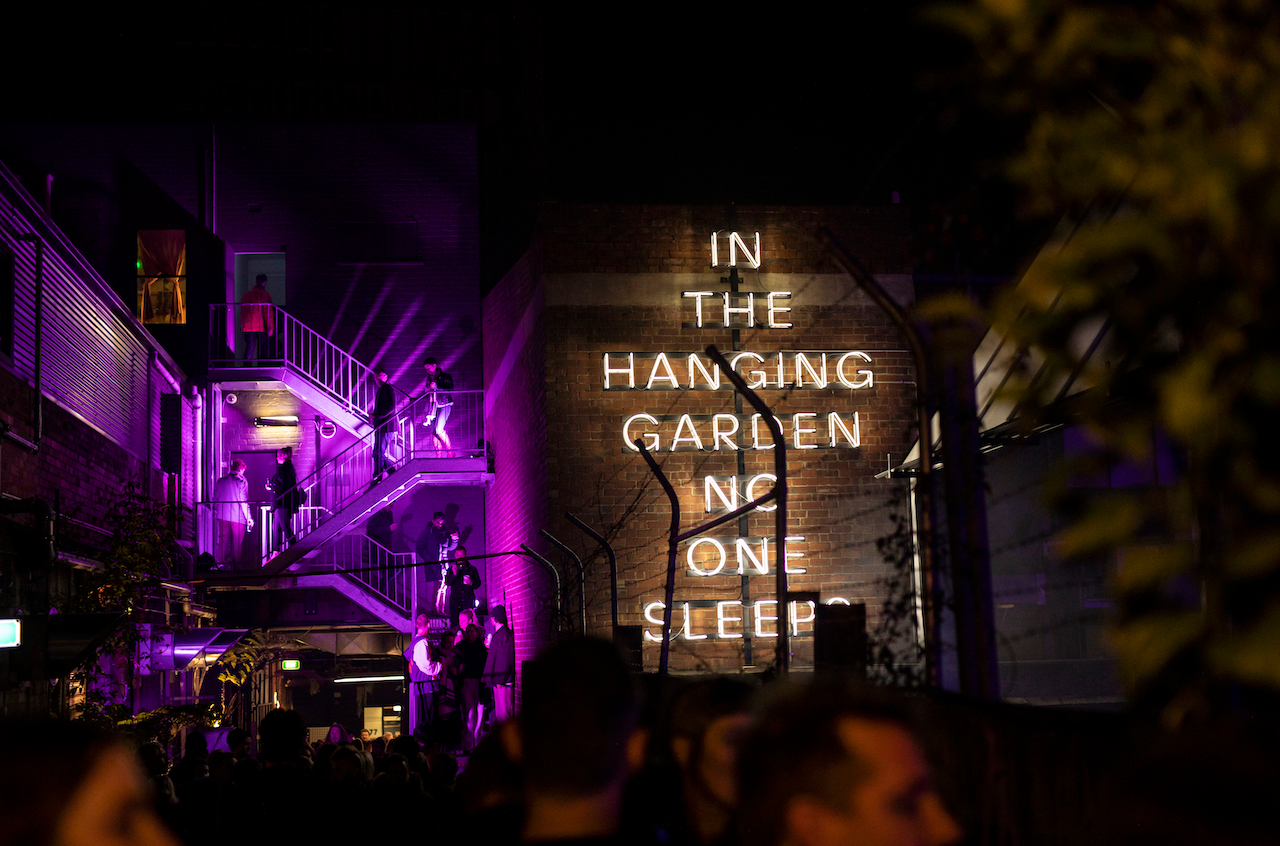
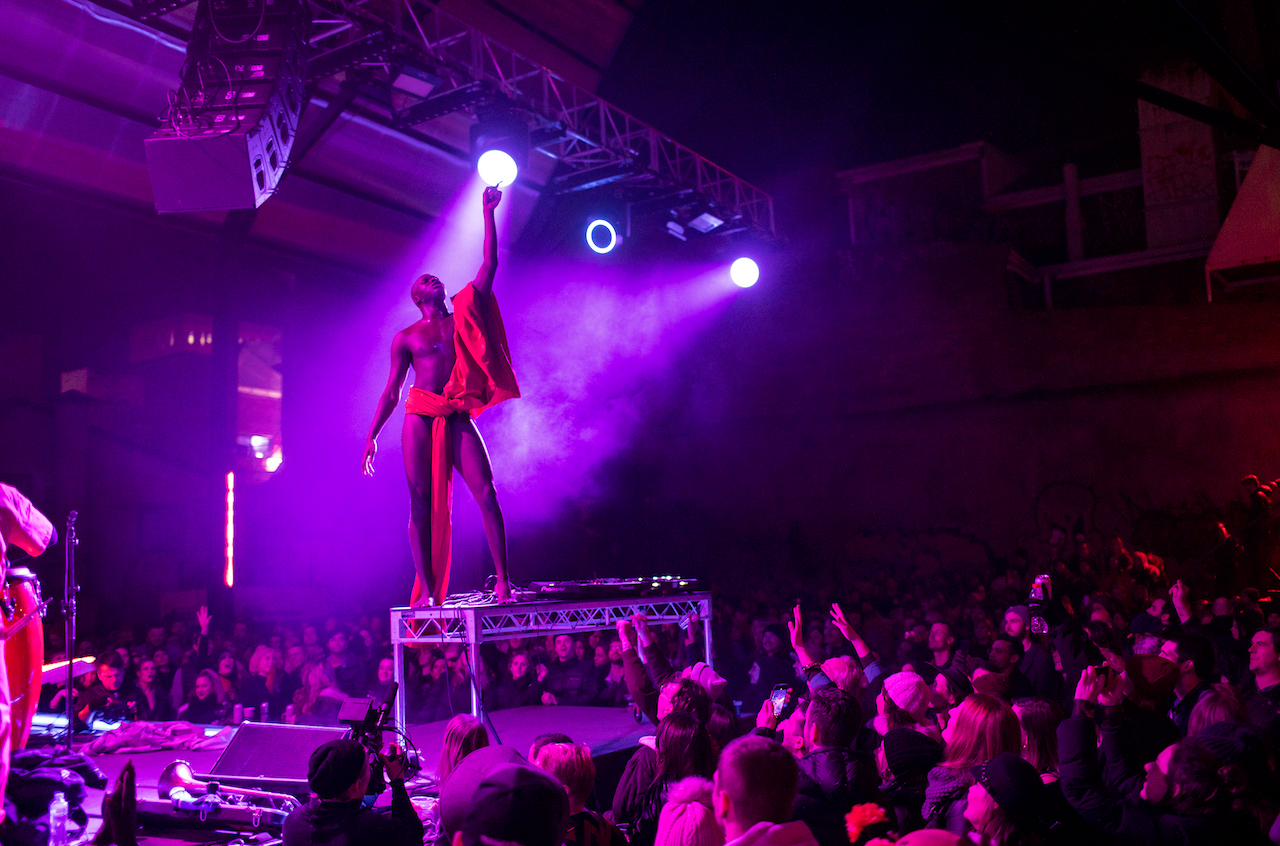 One thing was sure about Night Mass this year: it was international, gender-inclusive and all the better for aggressively pushing boundaries into unknown spheres. This is a fair summation of Dark Mofo's musical offering overall. Determined to allow artists to experiment, it's the perfect antidote for those who might feel disaffected with cookie-cutter lineups. Even calling it a "festival" feels reductionist, such is the array of events, from exhibitions and feastings to burnings and nude swims. Some of this may come across as pretentious posturing, especially in a state where unemployment and housing remain pertinent, starkly visible problems. "It's just more Melbourne art wank really isn't it?" a Tasmanian conferred to us at the local pizzeria after Night Mass. During the festival, the local newspaper The Mercury ran a lighthearted fashion piece entitled "Spot The Mainlander" (hint: impractical or awkward winter wear, head-to-toe Melbourne black). Dark Mofo was certainly a far cry from the realities of the rusting remnants of industry in the state's North West, where I used to live. It's also not the sort of festival you can visit on a whim, with many shows proving expensive and quick to sell out. But for the most part, Hobart seems to be onboard, as it should be. Rarely do you go to a festival where, aside from just seeing a few shows and adding to the local economy by being there, you're also challenged to learn more about the broader setting. I felt encouraged to go and explore beyond the confines of the festival; the interdisciplinary, all-encompassing curation almost demanded it. The DarkLab team know that venturing a short distance outside of Hobart will invariably confront you with some of the most breathtaking, challenging and viscerally thrilling sights, sounds and histories in Australia. Dark Mofo just offers a path and a map for how to get there. Photo credits / Dark Mofo/Jesse Hunniford - Lead, Red Cross, Against All Logic, FKA twigs, Lucrecia Dalt Dark Mofo/Rémi Chauvin - Dark Path Tesla Coil, Teto Preto, Gabber Modus Operandi
One thing was sure about Night Mass this year: it was international, gender-inclusive and all the better for aggressively pushing boundaries into unknown spheres. This is a fair summation of Dark Mofo's musical offering overall. Determined to allow artists to experiment, it's the perfect antidote for those who might feel disaffected with cookie-cutter lineups. Even calling it a "festival" feels reductionist, such is the array of events, from exhibitions and feastings to burnings and nude swims. Some of this may come across as pretentious posturing, especially in a state where unemployment and housing remain pertinent, starkly visible problems. "It's just more Melbourne art wank really isn't it?" a Tasmanian conferred to us at the local pizzeria after Night Mass. During the festival, the local newspaper The Mercury ran a lighthearted fashion piece entitled "Spot The Mainlander" (hint: impractical or awkward winter wear, head-to-toe Melbourne black). Dark Mofo was certainly a far cry from the realities of the rusting remnants of industry in the state's North West, where I used to live. It's also not the sort of festival you can visit on a whim, with many shows proving expensive and quick to sell out. But for the most part, Hobart seems to be onboard, as it should be. Rarely do you go to a festival where, aside from just seeing a few shows and adding to the local economy by being there, you're also challenged to learn more about the broader setting. I felt encouraged to go and explore beyond the confines of the festival; the interdisciplinary, all-encompassing curation almost demanded it. The DarkLab team know that venturing a short distance outside of Hobart will invariably confront you with some of the most breathtaking, challenging and viscerally thrilling sights, sounds and histories in Australia. Dark Mofo just offers a path and a map for how to get there. Photo credits / Dark Mofo/Jesse Hunniford - Lead, Red Cross, Against All Logic, FKA twigs, Lucrecia Dalt Dark Mofo/Rémi Chauvin - Dark Path Tesla Coil, Teto Preto, Gabber Modus Operandi